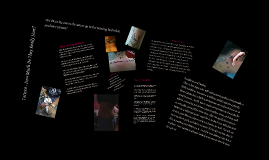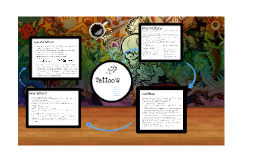Tattoo
Transcript: Traumatic Tattoos Gang Tattoo's Many people get tattoos as rites of passage, status markers, symbols of religious devotion, a showing of bravery Symbolism and impact of tattoos varies from culture to culture, and from place to place Some people get tattoos to show their feelings about loved ones Today people make the choice to get tattooed for art, cosmetics, sentimental/in memorial, or religious reasons Some get tattoos to symbolize their identification with a particular group including criminal gangs ethnic groups, or other subcultural groups Certain tribal groups in the Philippines believe tattoos have magical qualities to help protect their bearers "Tattoo - the form of marking the skin with indelible patterns, pictures, legends, etc., by making punctures into the dermis layer of the skin to change the pigment" (dictionary.com) It has been practiced for centuries in many cultures spread throughout the world Tattooing has been around for over 5000 years and was first founded on an ice mummy dating from the 4th to 5th millennium BC. He had around 57 carbon tattoos consisting of simple dots and lines on his lower spine, behind his left knee, and on his right ankle. Many other mummies dating from the end of the 2nd millennium BC bearing tattoos have been found, an example is the Mummy of Amunet from ancient Egypt and the mummies at Pazyryk on the Ukok Plateau. Many central and northern European tribes were heavily tattooed ex. the Picts (a tribe) were famously tattooed (or scarified) with elaborate war-inspired black or dark blue Other cultures have had other traditional ways to tattoo ranging from rubbing cuts with ashes to hand pricking skin to insert dyes beneath it. Brief History: Continue.. Typography is very important in the tattoo industry because it helps portray exactly what feeling you want to show the public With all the thousands upon thousands of typefaces to choose from, picking just one can perhaps be one of the hardest decisions Always take into account the feeling the typeface gives off Also, the location and the lay out are put into consideration Popular tattoo fonts: In our society today, we are pretty known for tattoo's and only having them in the sense of art and fashion. Yes, this may be true, but speaking as one who enjoys them, it is a lot more then just that. Instead of paper, we use our body as a canvas, we take our art to the grave with us. I feel as though typography is what makes the tattoo itself, it is what shows off the feeling, the meaning, the voice to what you can not express yourself. One of the many uses of tattooing are gang related Gang members display there commitment to the gang by getting tattoo's. It shows the individual's allegiance to the group in a personal and permanent way. Gangs were one of the first groups in modern time to use tattoo's as a way to identify them the "gangsters" of today, it is very popular for them to get tattoo's affiliated with that particular gang. For example, bloods, crips, etc It is considered to be a symbol of strength Used to display the bonds between the members in the group Are often done in black and grey style, or with the colour that identifies them. For example, Bloods are red and Crips are blue The most commonly used styles are with old English letters and fancy script styles These tattoo's may represent names of the neighborhood's, hometowns, zip codes, street names, and gang names Along with showing their dedication to society, it also shows there lack of membership in the straight society Besides getting tattoo's done professional, some members get tattoos while being in prison Prison tattoo's are very popular. Inmates may join a specific group or gang and get marks to show that they are apart of them Primitive tattoo tools were used to pierce the skin and were dipped in ink to set in the skin and the sharpened animal bone was tapped into the skin with a mallet tool the ink was made from dirt and water or soot diluted with water Thai tattoo methods were seen as a religious experience. The marks on the skin were religious symbols of tigers, temples, and script that would spell out a prayer. The instrument was welt using one hand and the other for guidance at the opposite end the tool would continuously stab the skin and rub the colouring into the wound The Polynesian tattooing method would label the stature in the society whether they be a chief or a assistant, and the sexual maturity of the individual. Using a sharpened animal tooth and a wooden handle rubbing dirt and blood into the wound The pain was extreme but to reject tattoos was cowardly in the culture In 1880 Thomas Edison had his electric pen rejected to franchise to the media but he sold the rights to A.B Dick, he turned it into the first electric tattoo needle in 1890 Tattoos were presented on skin for many reasons, some as a range in a tribe sometimes to provide symbol of acknowledgment of location In many tribes the same symbol would be tattooed as a branding

















